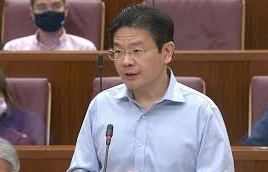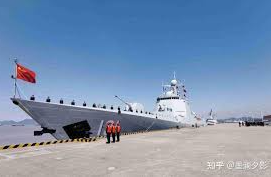While NS deaths are tragic, it’s vital to also recognize the chronic pain experienced by many servicemen due to their duties.
SINGAPORE — The safety of national servicemen (NSFs) has come under scrutiny, particularly in light of the recent statistics presented by Minister for Defence Ng Eng Hen. On January 9, he revealed that in the past 20 years, 42 NSFs have died while on duty, contrasted with 52 cases of permanent disabilities resulting from service-related injuries. This results in a death and disability rate of approximately 0.001 percent among the annual cohort of 300,000 NSFs (0.002 percent for those enlisted in the Singapore Civil Defence Force).
For perspective, Singapore’s road fatality rate was two per 100,000 persons, or 0.002 percent, in 2021.
While these figures may offer some reassurance regarding the safety of NSFs, the reality remains that 42 deaths are still 42 too many.
The conversation has been reignited by the recent death of NSF Sergeant (1) Edward H. Go, a 19-year-old who tragically collapsed while combating a fire at Henderson Road on December 8, 2022, and was later pronounced dead at Singapore General Hospital.
As time passes since Go’s death, more information is emerging, but the full context is still not entirely clear. Similar to other NSF fatalities, his death prompted an outpouring of grief, raising questions and concerns about the safety protocols in place for NSFs.
Minister Ng assured Singaporeans that every incident of death and permanent disability undergoes thorough investigation and that corrective measures are implemented to enhance the safety of NSFs.
Beyond the Numbers
However, there is a pressing issue that statistics on death and permanent disabilities do not capture: the myriad injuries that are more challenging to quantify.
These include chronic aches and pains that can arise from two years of rigorous activities such as marching, digging trenches, and lifting heavy equipment.
In a recent parliamentary response, Minister Ng stated that between 2016 and 2020, fewer than 500 NSFs, or about 1.5 percent of each cohort, sustained service-related injuries.
Ng emphasized that any necessary treatment is fully funded, and compensation is provided in some cases.
According to NS.sg, NSFs can file compensation claims for medical expenses stemming from service injuries and may be issued a Service Injury Card for long-term treatment needs.
Despite this assurance, numerous worrying discussions on Reddit have surfaced, with many former NSFs recounting their struggles to have chronic injuries recognized officially.
One user, U/Jjzeng, shared how he was assigned to an administrative role after injuring his knee but later had to return to fieldwork, resulting in anterior cruciate ligament tears in both knees that now require him to wear knee guards.
Others have expressed frustration over being labeled as malingerers when reporting knee problems. Some were unaware of their eligibility for a Service Injury Card, while others felt discouraged from applying for one.
In addition to knee issues, chronic back pain and ankle sprains are common ailments reported among servicemen, as noted by Today.
U/Jjzeng pointed out the societal stigma attached to men voicing discomfort, describing a prevalent belief that they are simply being “whiny.”
The Bigger Picture
Furthermore, it’s crucial to avoid placing all the blame on National Service. While it undoubtedly involves physical exertion, what happens when pre-existing injuries are exacerbated during service or when wear and tear becomes apparent post-NS?
Ultimately, some individuals emerge from NS in peak physical condition, while others are left with lasting effects.
The conversation surrounding improved injury coverage for NSFs deserves serious consideration, but it also raises complex questions about the attribution of injuries to NS duties. Some may argue that enduring discomfort is simply part of the NS experience.
It may be difficult to consistently pinpoint the origins of post-NS pain, and there’s a legitimate concern that simplifying access for NSFs to report chronic injuries could lead to system abuse by those looking to evade responsibilities.
However, we contend that prioritizing the needs of former NSFs grappling with chronic pain far outweighs these concerns.
Even if the number is small, that 1.5 percent represents real individuals—young men with promising futures ahead—who face genuine risks daily.








